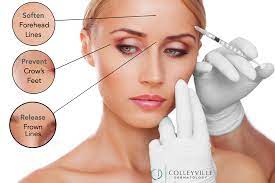


In recent years, the field of non-surgical cosmetic dermatology in India has witnessed a remarkable surge in technological advancements and treatment options. With an increasing demand for minimally invasive procedures and a growing awareness about skin health, dermatologists and cosmetic practitioners are continually innovating to provide safe and effective solutions. This article will explore some of the latest advancements in non-surgical cosmetic dermatology that are making waves in India.
Injectables and Fillers:
The use of injectables like Botox and dermal fillers has become commonplace in cosmetic dermatology. Recent advancements in this area include:
Botox and other Neurotoxins: Botulinum toxin injections, commonly known as Botox, have revolutionized the treatment of dynamic wrinkles. By temporarily paralyzing the muscles responsible for wrinkle formation, Botox can smooth out fine lines and wrinkles. In India, advancements in this field have led to more precise and customized treatments, reducing the risk of the “frozen” look. Additionally, newer neurotoxins with longer durations of action are now available, providing patients with extended results.
Dermal Fillers: Dermal fillers have long been a staple in the world of cosmetic dermatology, and their popularity continues to grow. These injectable gels, often composed of hyaluronic acid, collagen or other biocompatible materials, can be used to plump up the skin, smooth wrinkles, and restore lost volume. In India, the use of advanced dermal fillers with improved longevity and natural-looking results has become commonplace. Moreover, dermatologists are increasingly using a combination of fillers to achieve a harmonious balance in facial features.
Longer-Lasting Fillers: Newer generation fillers are designed to provide longer-lasting results, reducing the frequency of touch-up treatments.
Cannula Techniques: Dermatologists are increasingly using microcannulas for filler injections, which reduce bruising and swelling and provide a more comfortable experience for the patient.
Laser and Light Therapies
Laser and light-based therapies have seen significant advancements in terms of safety and efficacy. These treatments are used to address a wide range of skin issues, including pigmentation problems, acne scars, and hair removal. In India, dermatologists are now using advanced laser systems that offer faster and more comfortable treatments while minimising downtime. These innovations are particularly attractive to individuals seeking non-invasive ways to achieve smoother, clearer skin.Some noteworthy advancements include:
Fractional Laser Technology: This technology delivers tiny, evenly spaced laser beams to create micro-injuries in the skin, stimulating collagen production. It is used for treating scars, fine lines, and hyper pigmentation.
Picosecond Lasers: These lasers deliver ultra-short pulses of energy, making them highly effective in treating pigmentation issues, tattoo removal, and skin rejuvenation.
Laser Hair Removal with Alexandrite and Diode Lasers: These advanced lasers offer faster and more effective hair removal treatments with reduced discomfort.
Non-Surgical Skin Tightening
As people age, skin laxity becomes a common concern. Non-surgical skin tightening procedures have emerged as a viable solution. Innovative technologies, such as radiofrequency and ultrasound, have been developed to stimulate collagen production and tighten loose skin. In India, these treatments have gained popularity for their ability to rejuvenate the face and body without surgery.
Non-Invasive Body Contouring
Non-surgical body contouring procedures have also seen significant advancements in India. These treatments target areas with excess fat and cellulite, providing patients with a more sculpted appearance. Advanced techniques like cryolipolysis (fat freezing) and high-intensity focused ultrasound (HIFU) are gaining traction for their effectiveness and minimal downtime.
Non-Surgical Fat Reduction
Techniques like Cryolipolysis (commonly known as CoolSculpting) and ultrasound-based fat reduction have gained popularity. These treatments use controlled cooling or focused ultrasound energy to target and eliminate fat cells, providing a non-invasive alternative to liposuction.
Advanced Chemical Peels
Recent advancements in chemical peels have led to the development of tailored peels for specific skin concerns, including hyperpigmentation, acne scars, and fine lines. These newer formulations offer improved efficacy with reduced downtime.
Personalised Skincare Regimens
Dermatologists are increasingly using technologies like skin analysis devices and genetic testing to create customized skincare routines for patients. This approach ensures that patients receive treatments and products tailored to their specific skin type and concerns.
Conclusion
Non-surgical cosmetic dermatology in India has witnessed significant advancements, making it possible for individuals to achieve their desired aesthetic goals with minimal downtime and reduced risks. Whether its facial rejuvenation, skin tightening or body contouring, the availability of cutting-edge treatments and technologies has made cosmetic enhancements more accessible and safe. As these advancements continue to evolve, non-surgical cosmetic dermatology in India is expected to play an increasingly pivotal role in helping individuals look and feel their best. However, it’s essential to consult with a qualified dermatologist or medical professional before undergoing any cosmetic procedure to ensure the treatment is suitable for your specific needs and medical history.